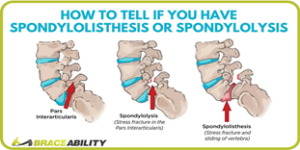Exercise guidelines for the prevention of osteoporosis in postmenopausal women
30% of postmenopausal women in the US were reported to have Osteoporosis, and at least 40% of these women will sustain one or more fractures during their lifetime. That’s a significant number to think about. Fractures can lead to pain, disability, loss of activity tolerance, and functional independence. Also, after an initial fracture, individuals are 2x at risk for secondary fractures within that year.
While the disease is more common in women, men are also at risk for osteoporosis. Nonetheless, if you are diagnosed with this or are at risk of being diagnosed, it’s essential to know that our bodies are still incredibly adaptable. Countless research has shown that exercise is an EXCELLENT evidence-based tool to decrease modifiable risk factors for falls and fractures! Your bone is a dynamic tissue that responds to your body and external loads by changing its structure/strength and alters its mass. It does so to withstand any excessive loads that are likely to result in a fracture.
This systematic review highlights the following key points:
- Principle of Specificity: target specific areas of the body that are most susceptible to fractures: wrist, hip, and spine
- Incorporating back extension strengthening exercises was associated with increasing spinal bone density.
- High impact jumping exercise interventions 2-3x/week in post menopausal women were found to have a significant positive impact on the femur 12 months after it was performed. (We recommend discussing with a Physical therapist to find a strengthening program that’s right for you- our bodies respond differently based on our needs)
- Principle of Progressive Overloading: as your bone adapts to an exercise, it must be increased progressively (Ex: increase time spent, add more reps, add weights or resistance bands)
- We recommend progressing your exercise once it starts becoming easier/every 2 weeks as a guideline.
- Principle of Reversibility: Any skeletal changes from exercise training will be lost once you stop it. Minimum dose to have a positive effect on your bones for the long term is 2 sessions per week.
- For true physiological skeletal changes to occur, the exercise intervention must last over 12-18 months. Patients may see the greatest changes in their bone mineral density during the first 5-6 months of starting the program.
Research-based parameters:
-
-
- Weight-bearing exercises 4-7x/week
- Ex: sets of jumping 20-40 times, bounding, skipping, hopping, playing tennis, dancing, recreational gymnastics, or playing football
- Challenging balance training for ~3hrs/week reduces falls by 39% and doing reactive or volitional stepping training reduces falls by 50%
- Ex: leaning/reaching over your toes, being able to stand still despite any perturbations, stepping over surfaces, and walking on unstable surfaces.
- Type of exercise: water-based exercise has been proven to reduce age-related bone loss at the hip and lumbar spine. Land-based exercises are better for improving your bone health overall.
- Resistance training: maintains and helps to improve bone mineral density when performed at high-intensity loads.
- Minimal requirements: 2 sets, 12 repetitions, at 70% of your maximal muscle strength. Performed 2-3 times per week.
- The exercise has to be progressively increased over time, and it must target your large muscle groups. Ex: squats, lunges, hip abduction/adduction, and abdominal strengthening/Transverse Abdominis focus.
- Weight-bearing exercises 4-7x/week
-
At Physical Therapy First, our clinicians are highly knowledgeable and trained to create a program that is tailored to your needs. If you are someone who is at risk or have been diagnosed with osteoporosis or low bone mineral density, you could benefit from an evaluation by one of our therapists to decrease any modifiable risk factors and maintain your physical health.
Reference:
Daly RM, Dalla Via J, Duckham RL, Fraser SF, Helge EW. Exercise for the prevention of osteoporosis in postmenopausal women: an evidence-based guide to the optimal prescription. Braz J Phys Ther. 2019;23(2):170-180. doi:10.1016/j.bjpt.2018.11.011



